[1] 2RHI460 Advertising Project
Naim Cinar
PART 1: INTRODUCTION TO ADVERTISING
The purpose of advertising
Advertising calls people to action:
- Advertising is used in a free-market system to promote one brand or group over another.
- Most competing brands are of equal quality.
- It’s a part of daily life and inseperable from popular culture.
- Advertising has become more ubiquitous than ever.
- It differentiates brands, groups, and causes, and ultimately sells products and calls people to action.
The definition of advertising
An advertisement (or “ad”) is a specific message constructed to inform, persuade, promote, provoke, or motivate people on behalf of a brand or group. (Here, “group designates both commercial concerns and government agencies and nonprofit organizations.) An advertising campaign is a series of coordinated ads, based on an overarching strategy, connected by look and feel, voice, tone, style, imagery, and tagline, where each individual ad in the campaign can also stand on its own. An integrated ad campaign involves various media and might include broadcast, print, interactive, and other screen-based, out of home, and unconventional media.
Different forms of advertising
- Public service advertising
- Cause advertising
- Commercial advertising
Public service advertising [PSA]
- It seeks to further the common good
- “The objectives of public services ads are education and awareness of significant social issues, in an effort to change the public’s attitudes and behaviors and stimulate positive social change” Ad Council
- Case Study: “Youth Reckless Driving Prevention”

Cause advertising
- Though initiated by commercial concerns, seeks to raise funds for NGOs or raise awareness ona a social cause and runs in paid media sites.
- It is generally affiliated with a corporation and used in part to promote a corporation’s public image or brand, unlike PSA, which has no commercial affiliation.
Commercial advertising
- Promotes brands and commodities by informing consumers; it is also used to promote individuals, groups, corporations, manufacturers.
- Commercial advertising takes many forms; from single print ads to campaigns in any media to sponsorship to branded utilities.
Commercial advertising
Commercial ads take many forms:
- Sponsors, brand-sponsored programs, product placement, branded entertainment, consumer-generated-content, in-game advertising…
- A branded utility: is product created by a brand or sponsor that is ostensbily useful to the consumer and generallt (but not always) offered free of charge.
- Branded utility examples from Türkiye (both digital and offline)
- Consumer generate content example: “Gotta Love it by Tom Clark
Who creates advertising?
- A conventional creative team is a duo compries of an art director and a copywriter (this model’s brainchaild is Bill Bernbach from DDB)
- What are the responsibilities of a creative director?
- Some agencies prefer interdisciplinary creative teams: account manager, IT expert, interactive designer, marketing expert, and so on.
- What are the responsibilities of a creative director? The overall look and feel, the visual style, visualization and design
- Other professions besides the creative team are: Strategic planners, account and marketing managers, programers …
PART 2: THE PROJECT PROCESS
The six phases of the project process
OVERVIEW > STRATEGY > IDEAS > DESIGN > PRODUCTION > IMPLEMENTATION
The six phases of the project process
Creative thinking is needed through all the phases of an advertising project.
Benjamin Bloom’s taxanomy of creative thinking:
- Knowledge
- Comprehension
- Application
- Analysis
- Synthesis
- Evaluation
Benjamin Bloom’s taxanomy of creative thinking:
- Knowledge: We gather information
- Comprehension: We grasp the meaning we have gathered, gaining insights
- Application: The traditional comceptual design stage, we analyze, examining our material in search of an idea and influences, bringing parts together to form a new whole
- Analysis / Synthesis / Evaluation: In phase 4,5,6, we evalueate, considering and scrutinizing in order to judge the value of our ideas, first conceptually, in relation to our initial goals, and then practicaly, as designed, produced, and implemented.
Phase one: Overview
- Initial meeting with a client
- A brifing on the assignment
- Learning about client’s business or organization, product, service, or group
- Determining the audience, and analyzing the competition
- Material gathering, meetings, setting the design and production schedule, and sometimes market research
Phase 1: Overview - continues
It is important to learn as much as possible about the brand.
- What makes the brand unique?
- What are the functional and emotional benefits of the brand?
- How does the brand compare to the competition?
INFORMATION GATHERING
Develop an understanding of how best to conduct research, specifically where to look for and gather information.
Phase 2: Strategy
- After gathering the information, we develop the direction your solution(s) will take.
- We examine, assess, discover, and plan.
- Strategy is the conceptual underpinning of any visual communication.
- Advertising strategy is considering the brand’s positioning, and aiming your advertising application in the marketplace to achieve differentiation, relevance, and resonance.
- It is a conceptual plan that provides guidelines–for both client and creative professionals–for all visual communication applications.
Phase 2: Strategy // The Creative Brief
A A creative brief is a strategic plan–a kind of map–that both the client and the advertising agenct agree upom, a written document outlining and strategizing a design project–it is also called a design brief or a creative work plan.
- Most briefs are made up of questions and answers–a handy format to full delienate the assignment, the objectives of the project, the design context, and the audience.
- Who constructs the creative brief?
Phase 2: Strategy //The Creative Brief
Case Study:Chick-fill-A “Eat more chicken”
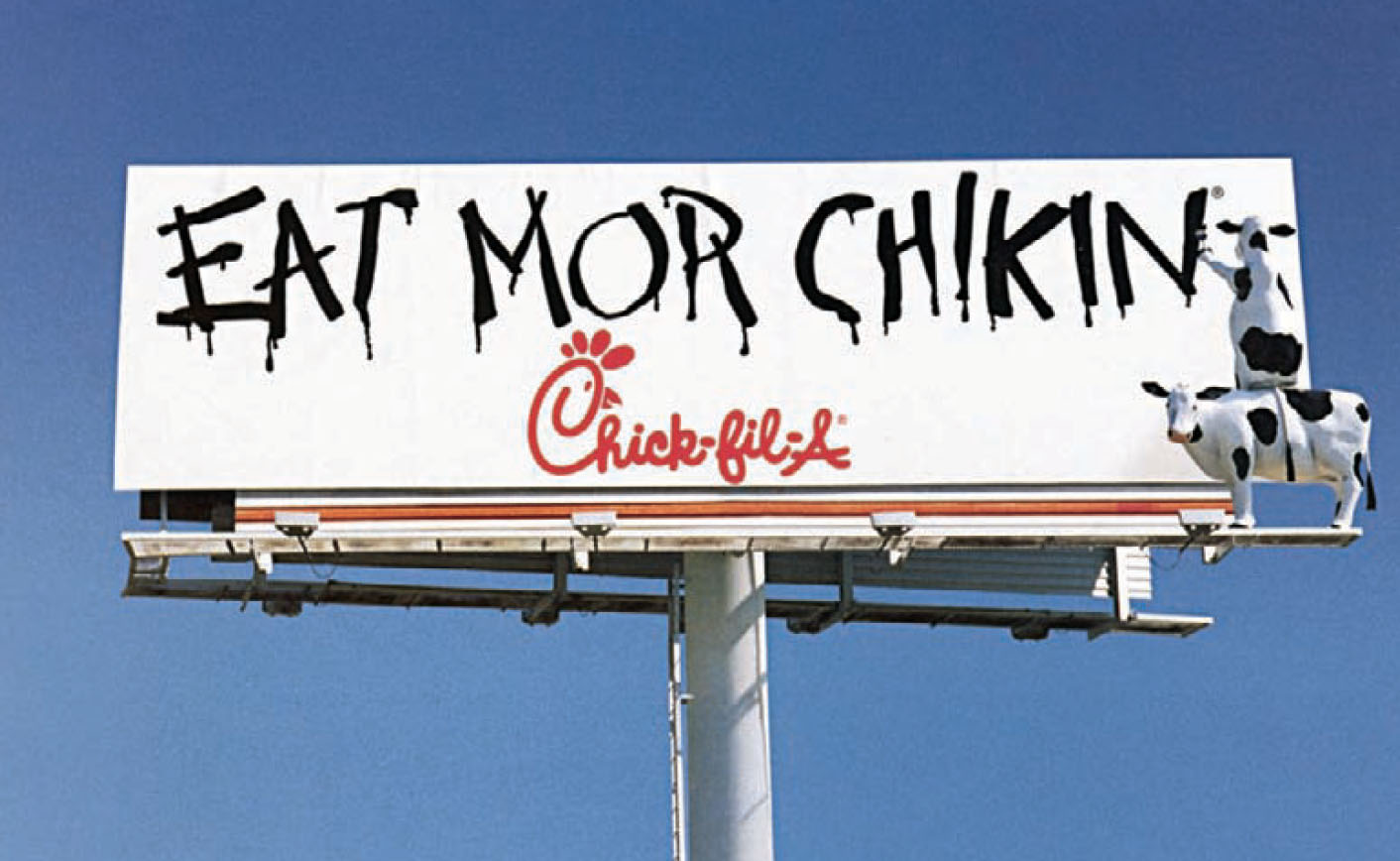
Phase 2: Strategy // Creative Brief
More examples
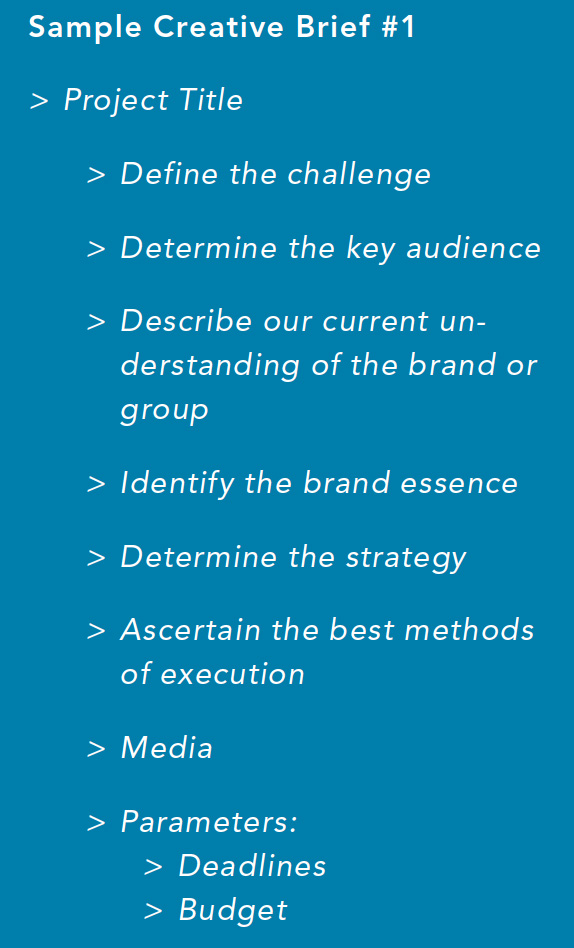
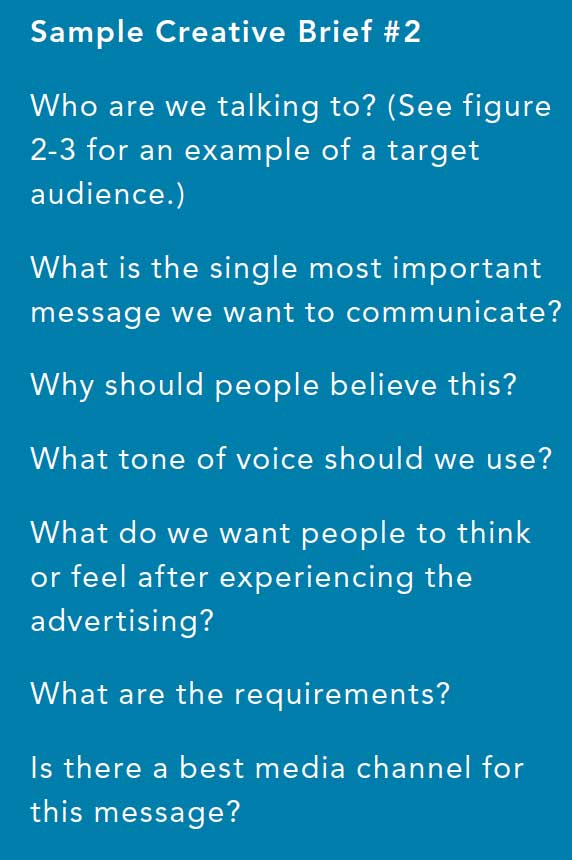
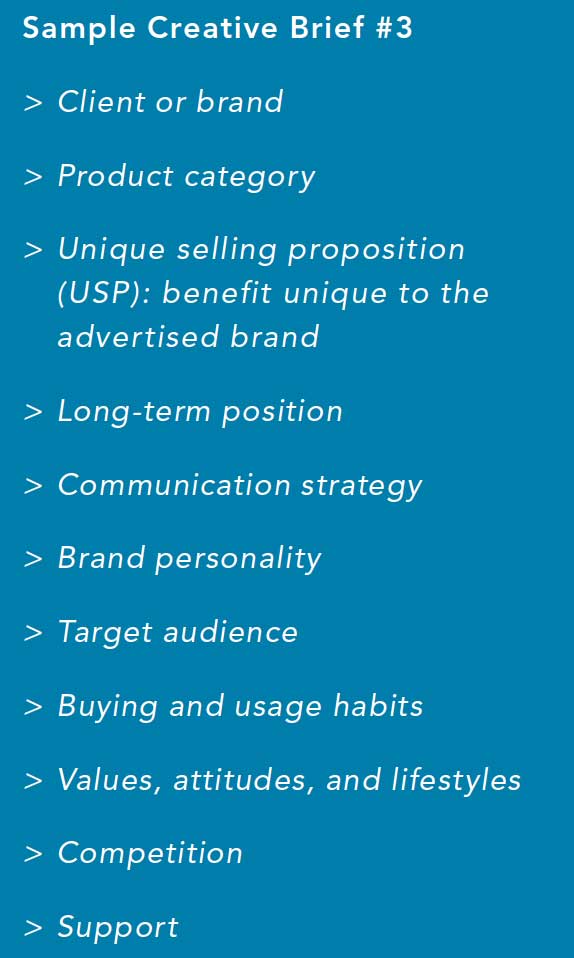
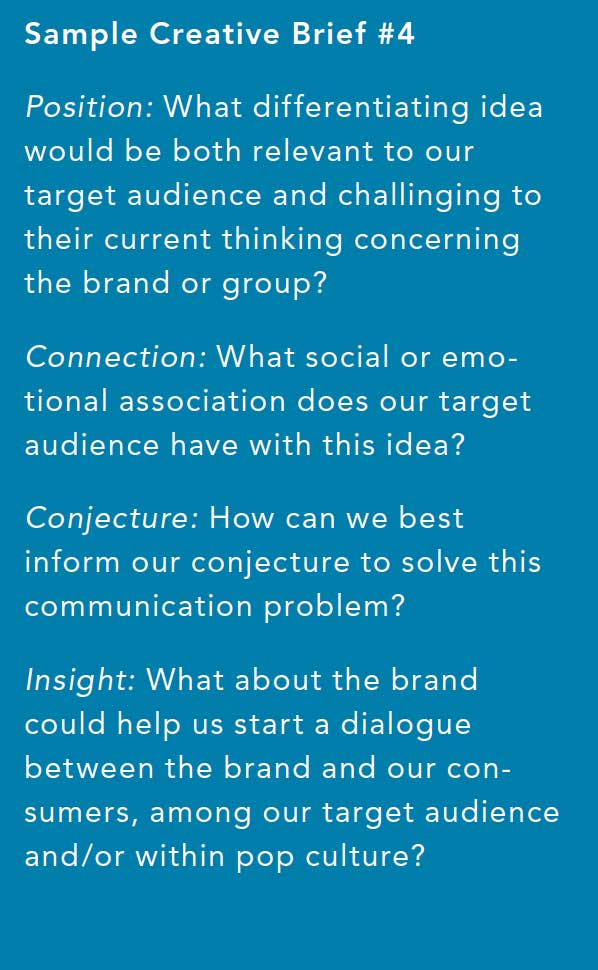
Phase 3: Ideas
- Creative advertising requires the communication of a meaningful message to an audience through an idea, expressed through the visual design and copy
- Formulating an idea requires: research, analysis, interpretation, inference, and reflective and creative thinking
- Agancies create several viable concepts to present to their clients.
Phase 4: Design
- The idea is articulated in visual form
- Several distinct and targeted options are presented to a client.
- Designing is a nonlinear and iterative process.
- The following steps are a good point of departure until you find your own way of working ➡️
Phase 4: Design
STEP 1: Thumbnail Sketches
- The preliminary, small, quick, unrefined drawings of your ideas in bw or color.
- Best practice is to use traditional image making techniques, rather than using digital media: It fosters exploration, problem finding, visual thinking, and discovery.
- Sketching helps you to stay open to possibilities during the art-making process.
- Generate as many different sketch ideas as possible.
Phase 4: Design
STEP 2: Roughs
- Roughs are larger and more refined drawings than thumbnail sketches.
- The purpose of this stage is to flesh out a few of your best ideas.
- A time to explore possible creative approaches to image making: collage, fotomontage, printmaking, drawing, or any handmade technique to best erxpress your idea.
- If a rough is not working go back to your sketches, and generate more ideas.
Phase 4: Design
STEP 2: Comprehensives
- Reffered to as a comp, is a detailed representation of a design concept thoughtfully visualized and composed, a very close representation of how the piece will look when produced.
Phase 5: Production // Phase 6: Implementation
PART 3: CREATIVE THINKING
Creative thinking
- It is the ability to stretch beyond the ordinary, to be original, innovative, and flexible.
- It helps to recognize commonalities, visualize metaphorically, modiy and elaborate imaginatively, and envision unlikely.
- Certain behaviours promote creative thinking: Looking for connections, observing acutely, asking questions and recognizing problems, being open to new ideas and methodologies.
Brainstorming
- Alex F. Osborn, Your creative power: How to use the imagination (New York: Charles Scribner’s Sons, 1948).
- Alexx Osobrn, the “O” in the BBDO.
Brainstorming // Morphological Method
- You analyze a problem by defining all its important factors, as well as the immediately apparent options for solutions.
- Concisely state the advertising problem.
- List all the important factors or parameters.
- Using the morphological structure, write or sketch all potential solutions.
- Scrutinize all the solutions in the box for efficacy in solving the problem.
- Select optimal and suitable solutions; combine them for potential solutions.
Brainstorming // Morphological Method
1.Select your primary attributes // 2.List all possible variations // 3. Start brainstorming

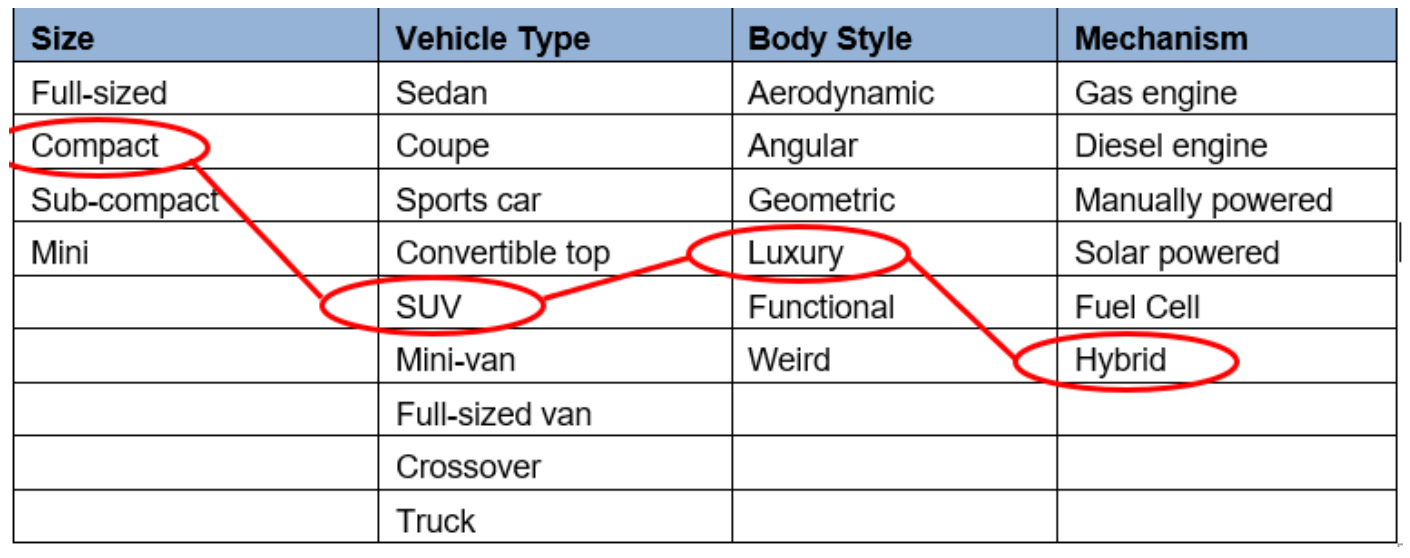
Brainstorming // Framing
- Erving Goffman Frame Analysis (1974): A Frame –that is, a scheme of interpretation in “which the particulars of the events and activities to which we attend are organized and made sensible”–helps us answer the questions.
- E.g. School: The frame elements of a school would include: Teachers, dry erase boards, erasers, books, library, desks and chairs, and so on.
Brainstorming // Framing
- We can use a frame. to examine a brand or group, looking for instights on which to base an advertising idea:
- Determine the scenario: What happens in this frame?
- What is the setting? What are the conditions?
- Who are the people or groups?
- What is their point of view around this specific experience?
- What are their goals?
- What are their assumptions? What are their perceptions?
- Are there conflicts? Is there cooperation?
- What are the outcomes?
Brainstorming // Framing
Changing the frame
- When brainstorming to generate ideas, frames might inhibit creative thinking.
- Changing a frame allows you to explore possibilities.
- Imagine what a brand or organization could be beyond its current personality or how it is commonly perceived.
Brainstorming // Framing // 1. The As-if frame
- If you were to approach a problem with an as-if frame, if you were to construe the world differently, you might gain a fresh perspective or a. transformative perspective.
- For example, scientists conduct experiments based on theories, which are not certainties.
- E.g. you might behave as if you had a wizard’s powers or act as if you couldn’t understand your native language
Brainstorming // Framing // 2. Reversal
- Seeing a situation, brand, product, or behavior from a different perspective (reversal) can help stimulate ideas
- Below, reversal is used to show the desirability of a handbag brand, in that the thief steals the bag while leaving the contents behind.
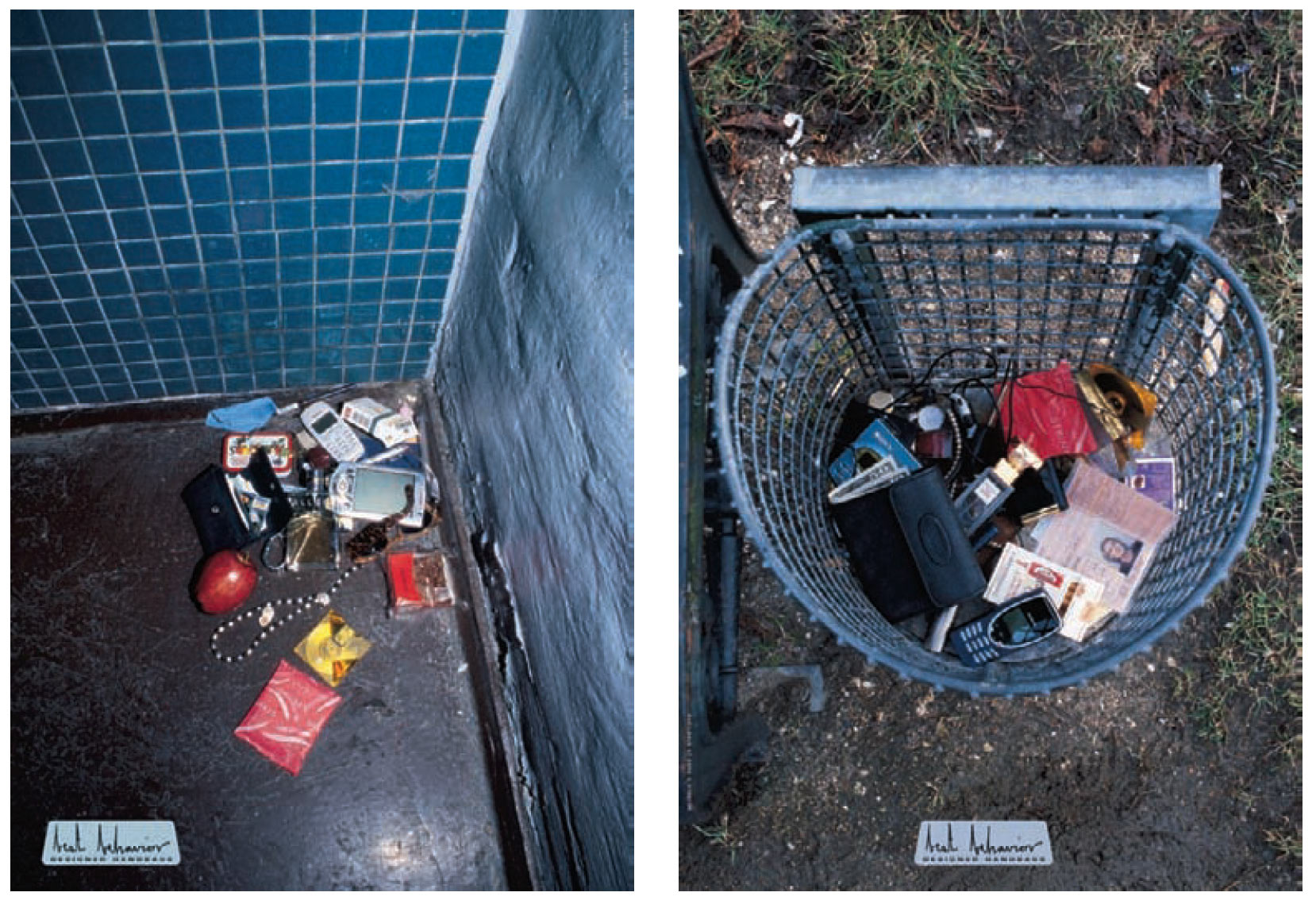
Brainstorming // Framing // 2. Reversal
How to use reversal
- Select a topic such as gaming, running, or dieting.
- Select an aspect (elements, characteristics, components, principles) of that topic or the entire topic, and then reverse it. For example, when dieting one can eat whatever one likes. When running, one must do it lying down.
- Any level of absurdity is welcome. Consider opposite perspectives, look at a situation or activity sideways, backwards, or from outside in.
Brainstorming // Osborn’s Checklist
- American artist Richard Serra experimenting with non-traditional sculpting materails.He compiled a list of words (to roll, to crease, to curve) Serra enacted an action verb on the material.
- Alex Osborn of BBDO created a similar checklist technique:
- Adapt
- Modify
- Magnify
- Minify
- Substitute
- Rearrange
- Reverse
Mapping
- A mind map is a visual representation, diagram, or presentation of the various ways, words, terms, images, thoughts, or ideas can be related to one another.
- Mapping (or word mapping, mind mapping, word clustering, spider diagraming) is a brainstorming and visual diagramming tool.
- It is used to visualize, structure, and classify ideas.
PART 4: Formulating an advertising idea
The Brand Idea // The big idea
- Imagine the future of technology. Can you predict how fragmented the media landscape will become? “Ideas” will still be critical and creative thinking will be necessary.
- We have to generare ideas and content that people will seek out, that pulls people in across media.
- The time of pushing advertising at people is over.
The Brand Idea
The branding idea is based on several factors:
- The nature of the brand or group
- The goals of the differentation and distinction
- A strategic brand persoanlity
- The target audience
- What is important to the target audience
- Positioning
The Brand Idea // Construct Indicators
Whether brand strategy is determined before an advertising agency comes on board or developed with agency collaboration, the following must be identified for the brand, group, or individual:
- Attribute: a defining property or characteristic
- Functional benefit: The practical or useful characteristics of a product or service
- Emotional benefit: An intangible asset based on feelings, not on a functional characteristic of a product or service.
Example Ad // Functional or Emotional?

Brand Idea Guide
The indicators for effective promotion and potential growth:
- Differentation
- Ownership
- Relevance
- Branded Utility: Usefulness
- Storytelling
- Unity
- Common experience
